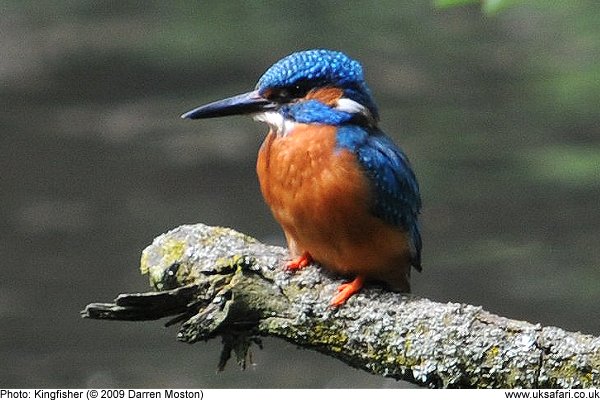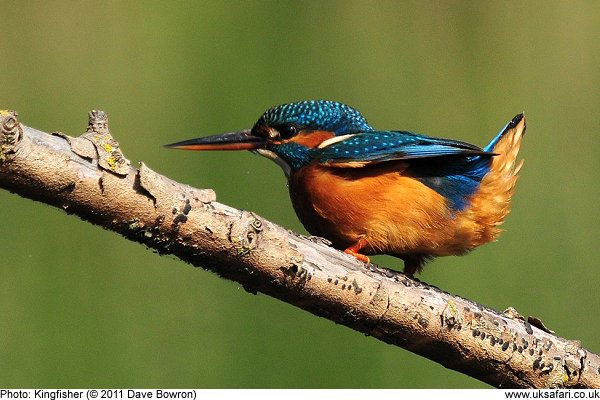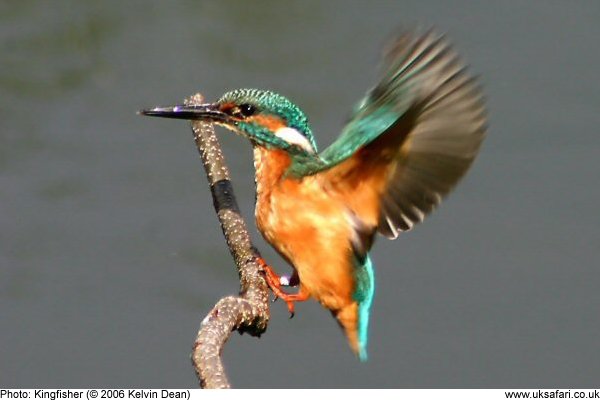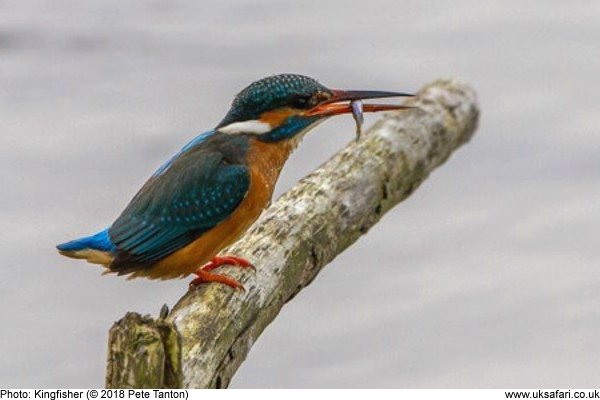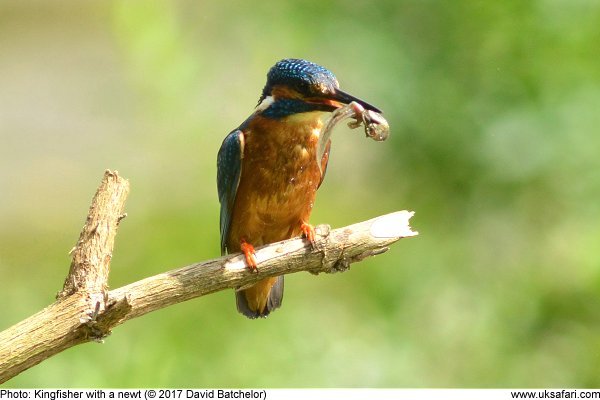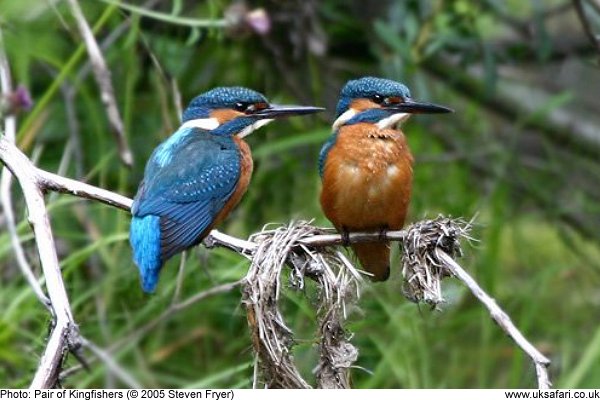 Quick Facts
Quick Facts
Scientific name: Alcedo atthis
Size: Approximately 13cm. The beak is around 4cm long
Distribution: Found in most of the UK except the north of Scotland
Months seen: All year round
Habitat: Lakes, ponds and slow moving rivers and streams. In winter kingfishers are sometimes seen at the coast
Food: Mostly fish and some insects
Special features: Most sightings of kingfishers are very brief. Usually a quick, dazzling flash of sapphire blue plumage whizzing low over the surface of water. If you're lucky you might spot one perching, staring intently into the water as it lines up to catch its next fish.
The kingfisher's nest is a burrow excavated in a bank beside water. The eggs are laid at the back end of the burrow between April and June.
When the eggs have hatched the parents will continually fly into the burrow with fish for the chicks. Another sign that there are chicks in the burrow is when you see the adult kingfisher flying out of the burrow and briefly dipping into the water. The kingfishers feathers can become messy with all the fish being carried into the burrow, and this dipping helps to clean them.
When the chicks have fledged they only remain with the parents for a short time. Usually just long enough to learn to catch their own fish. After this they're driven away by the parents to find their own territories.
The male and female kingfisher look very similar, except for the beaks. The beak of the male is all black, while the lower half of the females beak is a reddish-orange colour.
 Related Pages
Related Pages
- Window Blind (hospital case)
- Double Glazed Kingfishers (hospital case 2)
- UK Safari Bird Section
- Identify other wildlife
- Free Newsletter

 Popular Pages
Popular Pages
Amphibians, Bats, Badgers, Beetles, Birds, Birds of Prey, Bumble Bees, Butterflies, Caterpillars, Creepy-Crawlies, Deadly Spiders, Dolphins, Dragonflies, E-Postcards, False Widow Spiders, Free Newsletter, Frogs, Fungi, Garden Spiders, Glow-Worms, Grey Squirrels, Hedgehogs, House Spiders, Ladybirds, Mammals, Marine Mammals, Moths, Owls, Reptiles, Spiders, Toads, Trees, Wildlife Hospitals
© Copyright 2017 G. Bradley - UK Safari | About Us | Links | Contributors


 Kingfishers
Kingfishers